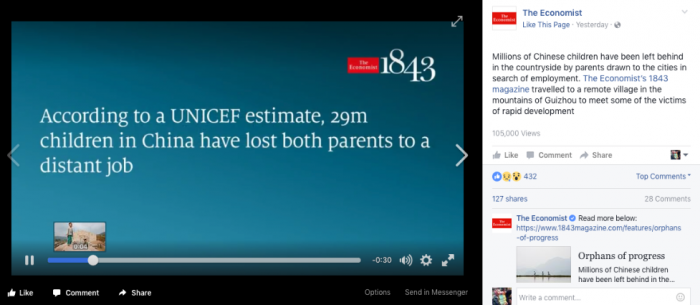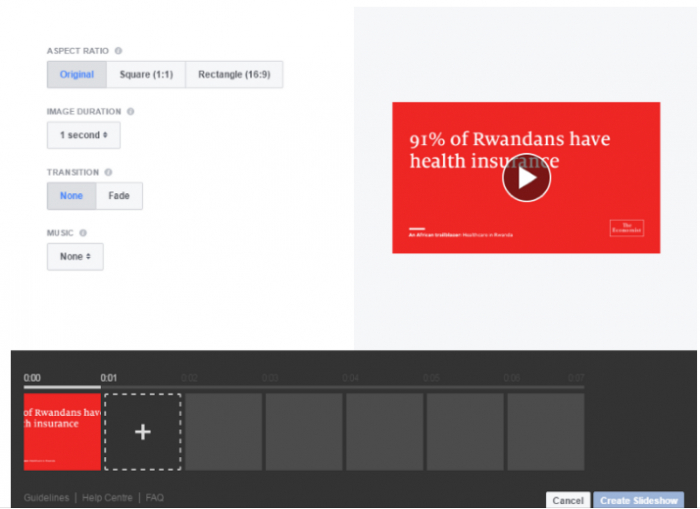
Publishers responding to Facebook’s video push are doing all they can to get more videos on the platform — even if those videos started off as something very different. (And even if it turns out that some elements of Facebook video use has been significantly overstated.)
The Economist, for example, recently started using Facebook to repackage some of its magazine stories into video form. The format, somewhat awkwardly dubbed the “vimage,” takes advantage of a Facebook tool that lets publishers merge a series of photos into videos (though they can probably more accurately be called slideshows).
The Economist has created a handful of the videos over the past few weeks, using the format to repackage stories about the collapse of a South Korean container line, Chinese children left behind by their parents’ migration to cities in search of jobs, and a review of Johan Norberg’s optimistic book Progress. The magazine’s social team has kept things simple, limiting the videos to roughly 30 seconds and rarely going beyond a few words, a chart, or a photo in each individual slide. Most don’t have music. The entire creation process can take as little as two minutes, says Economist social media writer James Waddell. “But extracting the relevant copy from the article and making sure it looks good and reads well takes a little more work,” he added.
The videos are a variation of the approach that many publishers have taken when creating video for Facebook, Instagram, and Twitter. Responding to the way that users watch videos on the platform, publishers have produced videos that rely on text overlays rather than sound keep viewers hooked.

Leave a comment